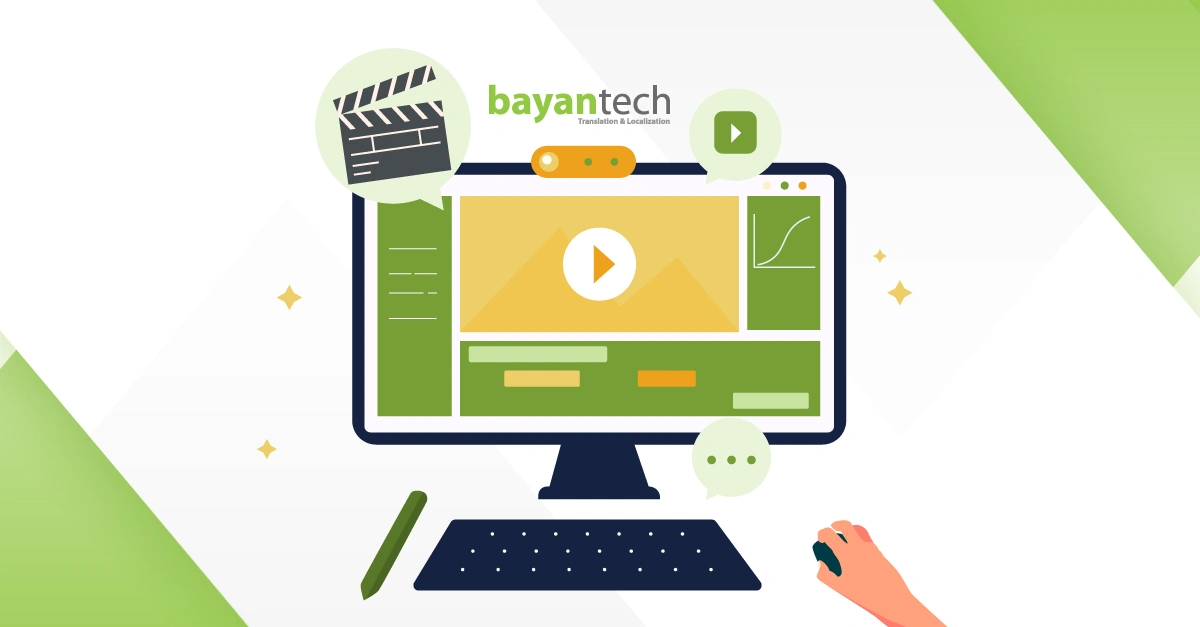A few years ago, you read somewhere that e-learning is the next big thing. Perhaps this is why you have launched your online e-learning platform or you’ve integrated e-corporate training programs. Now, this blog is where you’ll find out why to translate e-learning is a major step forward, taking your business to the next level.
E-learning translation isn’t the next big thing; it’s already here!
While some might be wondering why bother to translate e-learning, there’s another crucial question – can you afford not to?
In this blog, we promise to answer the first question, and by the end of it, the answer to the second will be evident.
Scroll down to read the 5 reasons why translating your e-learning material worth the hype!
Why Translate E-Learning Courses into Other Languages?
English Is No Longer the Default Language
Now is a good time to realize that English is a global language but is no longer a dominant language. The tendency to communicate globally using English has exponentially shrunk. People speak English, but that doesn’t mean they are fluent.
Only 20% of the world speaks English¹, including both native and non-native English speakers. In other words, there is still 80% out there who knows nothing about your online courses!
If this means anything, it would be that your e-learning courses and training programs haven’t reached their full potential yet. To translate e-learning into other languages is to go to great lengths to reach out to learners all over the world and roll out a gigantic audience base and a global workforce. This is how you unleash your full potential, your global potential.
People Learn Better
You might already know by heart every study that examines customers’ linguistic preferences when it comes to purchasing services and products. So, why should e-learning be any different?
People are more comfortable speaking and communicating in their own language. And when it comes to learning and education, learners are more receptive if the information is provided clearly and convincingly in their native language, which helps them retain and process information better and more efficiently.
Perhaps the study by The Center to Protect Workers’ Rights (CPWR) in cooperation with the Occupational Safety and Health Administration (OSHA) ² showcases how crucial it is to translate e-learning into other languages. The study demonstrates how the Spanish workers couldn’t understand a substantial amount of the training program which was delivered in English. It also revealed that they didn’t have the English skills needed to communicate and engage.
The moral lesson here is that, as a company investing in developing professional training programs, you can’t afford not to translate e-learning. In the worst-case scenario, this might threaten your corporate’s safety and health standards, for instance. The point where your corporate training could be doing more harm than good, that’s your cue to translate e-learning into your employees’ native language.
“Make It Personal” for Maximum Engagement and Satisfaction
The world is so big right now on personalization; it has become a crucial part of the customer experience or – as it’s the case here- the learner experience. If you still have doubts, check this out: according to United States National Education Technology Plan 2017³, personalized learning is all about optimizing the whole learning process for the needs of each learner.
The trick, then, is to provide personalized or customized learning experiences through your online courses or employee training. And what is better customization than offering versions of your training material that are available in the first language of your audience?
However, to translate e-learning into other languages doesn’t only mean switching languages. E-learning translation goes far beyond! Learners come from different countries and diverse cultural backgrounds. On a broader scale, a personalized experience requires tailoring your e-learning content to their cultural preferences, presenting concepts that are culturally relevant to them.
If you are an academic institution, a corporation, or an e-learning provider, integrating a solid plan to translate e-learning means you CARE.
Learners joining your online learning community will appreciate that they are included; they’ll feel your courses are meant to speak to them and benefit them. The same goes for your employees who now feel valued; they feel they belong to or that they are an integral part of your organization – which reflects a positive relationship between a company and a worker.
Now because they relate, they are motivated, and eventually, they engage! They are more receptive, they feel confident, and only then they can perform better.
Increased Efficiency and Productivity
With these incredible levels of engagement, it’s time you sit back and enjoy seeing your efforts pay off.
This is precisely the destination of the journey you embarked on when you decided to translate e-learning into different multiple languages. Witness the best productivity and performance rates ever, as well as maximum impact and retention.
Your staff is now professionally trained since e-learning translation has provided course content of the same level of accuracy and consistency (of your original version of the course) to your entire global workforce. Functioning as a single unit, they have enhanced their current skills and they can now perfectly fit their role within your organization. They are capable of showing high levels of quality and quantity and performance. There’s nothing hindering or stopping your corporation to achieve its goals and objectives
Sign up to our newsletter to receive the latest blogs and news
Capitalizing on the E-Learning Growth Revenue
It’s common sense! You have taken a smart business decision incorporating e-learning translation. You now have a greater range of audience who are satisfied and engaged. Your staff satisfaction is a reflection of your brand image and your customers’ satisfaction. It’s not a surprise, then, that this vital step is increasing your ROI and your overall market share as well as bringing you closer to your business expansion goals.
Let’s talk numbers.
Experts speculate that the explosive rise of the e-learning industry is unlikely to tranquil. Research and Markets released a report4 in February 2019 that forecasts the e-learning market to make triple the revenue of 2015 – growing to $325 Billion by 2025.
Doesn’t that sound tempting? We bet it does. The good news is when you translate e-learning, you are capitalizing on this mammoth revenue growth. Because you are reaching to the remaining 80%, which provides you with a competitive advantage among others who are limiting themselves to just one language.
Conclusion
Let’s just state the obvious; choosing not to translate e-learning hinders your business progress and growth. Take this as a win-win situation. Investing in your business to provide your audience with what’s best for them ends up with you achieving the best results for your business.
So, now can you afford not to translate e-learning?
bayantech expert teams recommend e-learning translation for all your e-learning and training materials. With 15 years of hands-on experience in the e-learning industry, bayantech skillfully and smoothly creates accurate, consistent multilingual versions of your courses in a timely and cost-effective manner.
Get in touch and our specialists will gladly answer all your queries and walk you through every step of the process before execution.









